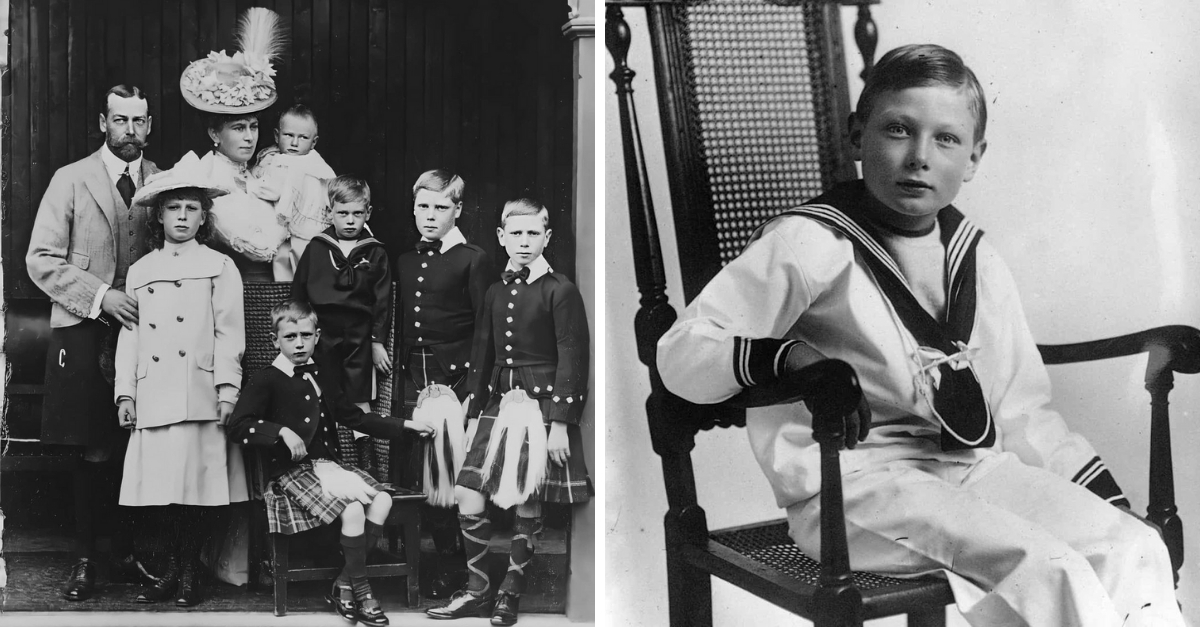
The royal family has a rich history. Each of its members has a unique and fascinating story.
Certainly, one of the most intriguing stories to come out of the royal family is that of Prince John of Wales. Born in 1905, John was the youngest child of Queen Mary and King George V. That makes Prince John the youngest sibling of King George VI, Queen Elizabeth's dad.
Chances are you've never heard of John. There's a reason. His short life was quite mysterious. He spent most of his life at Sandringham, where a governess cared for him. He was diagnosed with epilepsy at 4 years old. Historians also believe John may have been autistic.
The royals decided to hide John's condition from the public. He died at just 13 years old, after which his epilepsy was revealed. The mysterious handling of the situation upset royal fans of the era. Many believed the royal family was cruel for sending John away. Today, historians have new ideas about what a day in the life of "The Lost Prince" was really like.
Prince John of Wales was born on July 12, 1905, at York Cottage at Sandringham Estate. The youngest child of King George V and Queen Mary, "Johnnie" was sixth in line to the throne at the time of his birth. Sandringham would set the scene for most of John's childhood as his health conditions came into play.
John spent a lot of his early years at Sandringham with his siblings: Prince Edward, Prince Albert, Princess Mary, Prince Henry, and Prince George. They were cared for by their governess, Charlotte "Lala" Bill.
There isn't a lot known about John's early years, but what is known comes from letters recovered by other extended members of the royal family.
The Dowager Empress of Russia talked about George V's kids in a letter to her son, Tsar Nicholas II.
"George's children are very nice … The little ones, George and Johnny are both charming and very amusing," she wrote.
Princess Alexander of Teck shared a cute anecdote in another letter. She described John as "very quaint and one evening when Uncle George returned from stalking he bent over Aunt May and kissed her, and they heard Johnnie soliloquize, 'She kissed Papa, ugly old man!'"
It wasn't until John was 4 years old that the family started noticing he was different. He was described as "painfully slow." Eventually, the family would see John have seizures. He was diagnosed with epilepsy. He also began showing signs of a disability, which historians today believe was autism.
John was not allowed to attend his father's coronation as king in June 1911. The royal family and their team feared that any incident involving John would damage their reputation. Still, he was seen in public periodically until he was 11 years old. Meanwhile, the family secretly wished for his condition to improve.
John rarely saw his parents after that, as World War I broke out and they had duties to attend to. Many have said the royal family forgot about or mistreated the struggling young boy, although that's been contested over the years. The biggest piece of evidence in their favor is the fact that John was never, at any point, removed from the line of succession.
In 1916, John's condition began to worsen. His seizures became more frequent, and their severity also increased. It was at that point that John was sent to Wood Farm, on the Sandringham estate. It was at that time that physicians began to prepare the royal family for the fact that he likely would not live to adulthood.
Although John was coherent and able to interact with the world around him, they discontinued his formal education. He still had visitors, from his siblings to cousins and childhood friends. His grandmother, Queen Alexandra, decided to maintain a garden there especially for him, which became one of his favorite places to pass the time.
By that summer, John was kept mostly in the care of his governess and wasn't seen in public. As the months progressed, it got to the point that his siblings could no longer see him because they were so upset by how his condition had worsened. On Christmas Day 1918, for example, he joined the family for Christmas before being driven back to Wood Farm.
Less than a month later, on January 18, 1919, John suffered a severe seizure and died. He was 13 years old. Queen Mary wrote about the experience in a diary, according to Denis Judd's George VI.
She described it as "a great shock, tho' for the poor little boy's restless soul, death came as a great relief. [She] broke the news to George and [they] motored down to Wood Farm. Found poor Lala very resigned but heartbroken. Little Johnnie looked very peaceful lying there."
Queen Mary wrote to her friend, saying that although the family was struggling, they knew it was what was best for John.
"For [John] it is a great relief, as his malady was becoming worse as he grew older, and he has thus been spared much suffering," she wrote.
"I cannot say how grateful we feel to God for having taken him in such a peaceful way, he just slept quietly into his heavenly home, no pain no struggle, just peace for the poor little troubled spirit which had been a great anxiety to us for many years, ever since he was four-years-old."
Edward, who was 11 years older than Johnnie, shared a startling take on his little brother's death.
"His death is the greatest relief imaginable or what we've always silently prayed for," he wrote.
"This poor boy had become more of an animal than anything else and was only a brother in the flesh and nothing else."
The Daily Mirror shared news of John's death with the public the day after, as he was being buried at Sandringham. In its coverage, the outlet publicly mentioned John's epilepsy for the first time. The news left many with questions about how the royal family had handled the young boy's health, leaving rumors of mistreatment that linger to this day. Historians have pointed out that their approach wasn't particularly cold considering how epileptics were treated at the time, as well as the heightened influence of the royal family during that time. The truth of the matter, however, died with John and his siblings.




